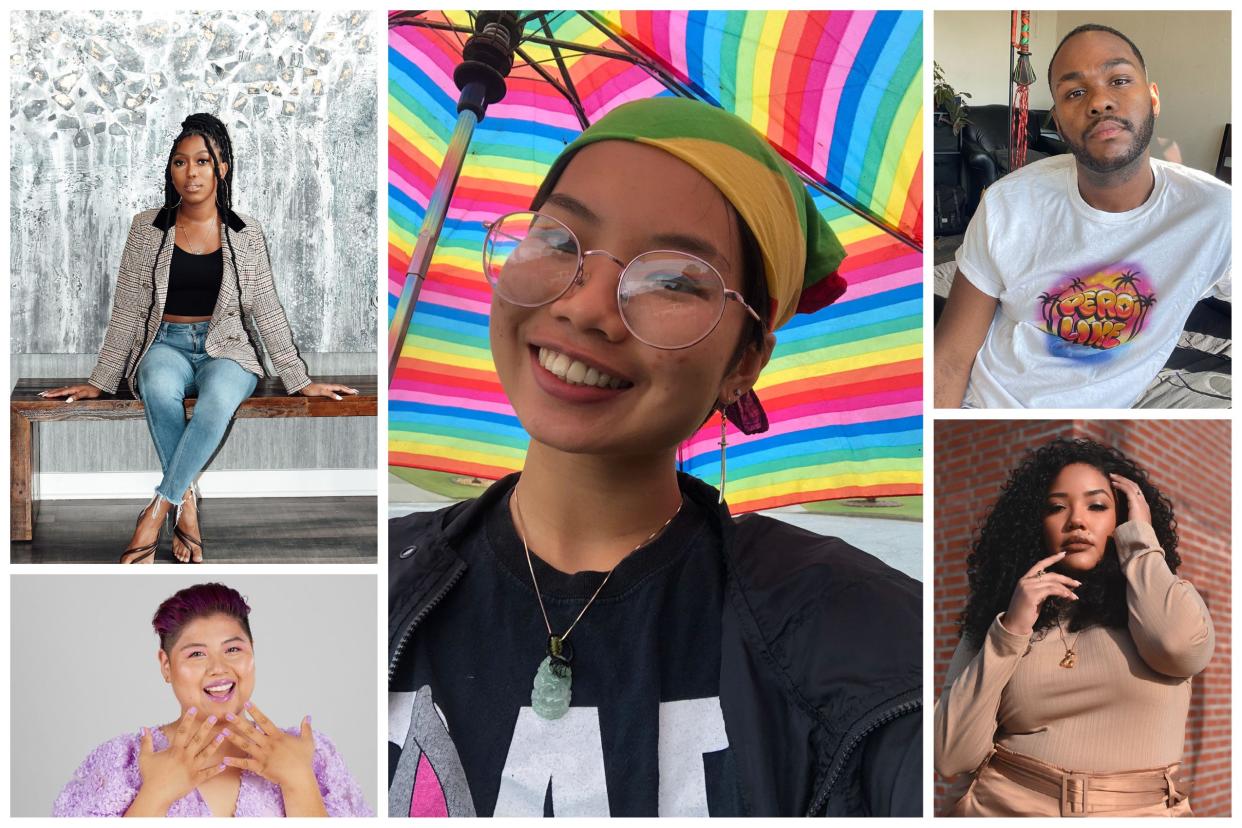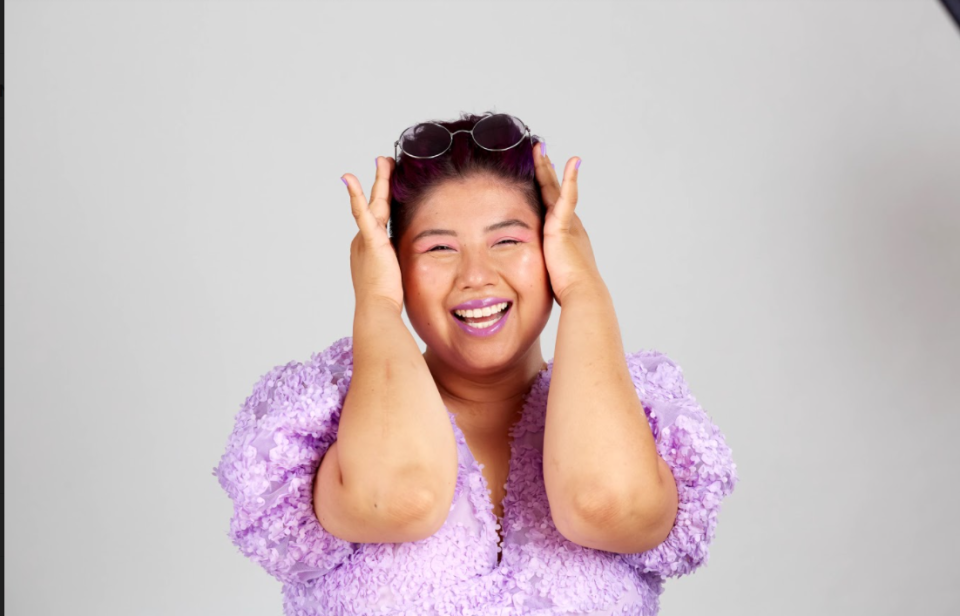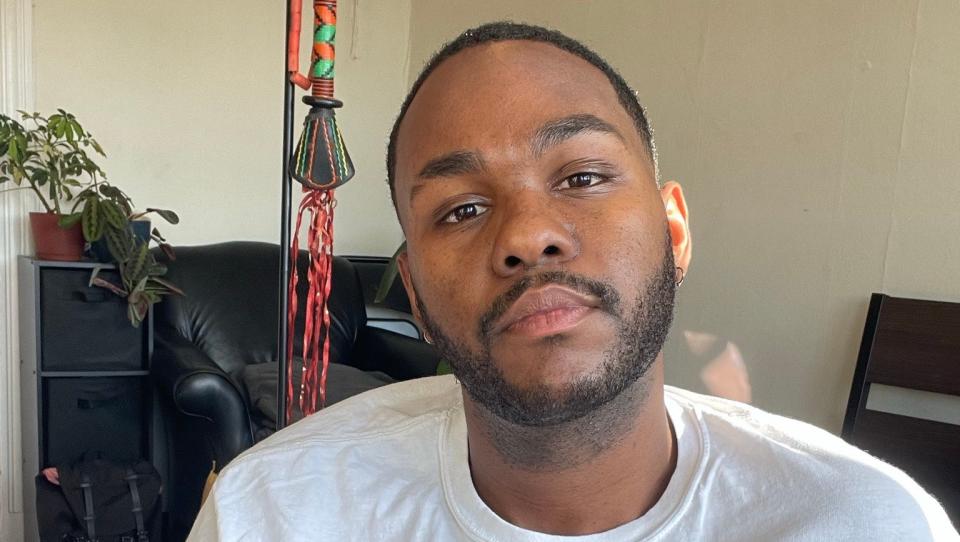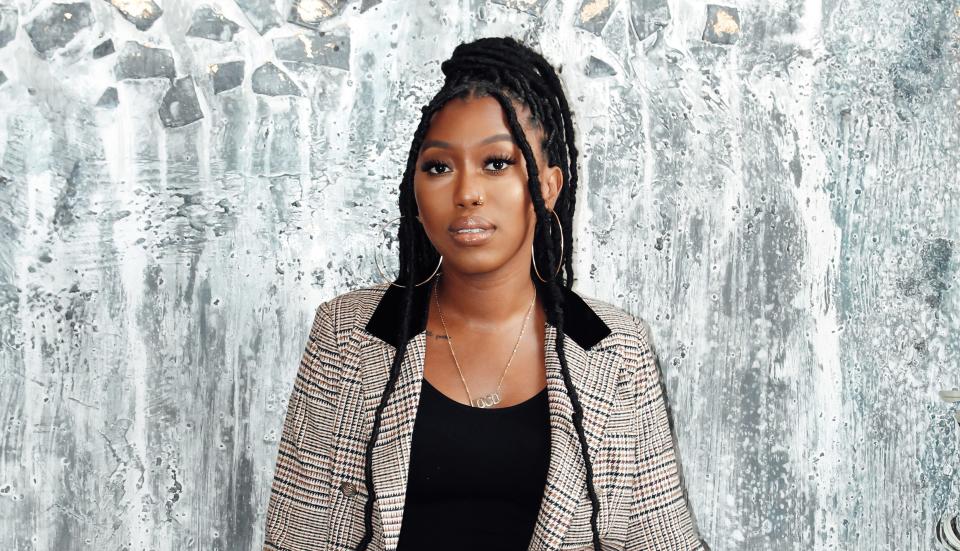'I became what I didn't see': Latinx and Hispanic influencers speak up about representation

Ren Fernandez-Kim never felt quite at home with their two cultures; their father is Peruvian and their mother is Korean. Fernandez-Kim said it was hard to accept who they were when Asian Latinos were never seen or talked about.
On one side, Fernandez-Kim wasn't Korean enough and on the other, they were "too Asian to be Hispanic."
"I grew up never quite loving both sides of me because I didn't fit in. No one who looked like me also spoke Spanish," Fernandez-Kim told USA TODAY. "It was hard to love something Latino and U.S. media never showed."
In Spanish Harlem, New York, Ilianna Ayala was surrounded by Black and brown Latinas but never saw them in the news or TV. Ayala said far too often, Latinas are falsely portrayed as "thin, white or light-skinned," which alienates millions of "melaninated Latinas."
Ayala and Fernandez-Kim are among many Latinos who have been historically overlooked within mainstream culture. They've said they don't fit the "accepted" idea of a Hispanic.
But they are growing quickly — the 2020 U.S. Census is proof that the identity of Latinos and Hispanics is changing. Latinos who identified as “other” rose from 37% to 42%, and the share identifying as two or more races jumped from 6% to 33%, according to the census.
Now, in honor of Hispanic and Latinx Heritage Month, they're sharing their stories to connect with others like them.
"People who look like me, we have always been the faces of Latinx culture," Ayala told USA TODAY. "We've just been the unseen, unheard faces,"
Hispanic Heritage Month: HHM celebrates the culture and accomplishments, but is it inclusive enough?
Mexican Independence Day: How September 16 signifies a 'moment of hope' for Mexico
'What are we supposed to look like?'
As a teen, Fernandez-Kim felt like they didn't have a home. They were born in South Korea and moved to the U.S. when Fernandez-Kim was just 3 years old. Their father is Peruvian and mother is Korean, making Fernandez-Kim what they call "Koruvian."
But growing up, Fernandez Kim struggled with identity in a Latinx culture that didn't embrace those of mixed race or differing looks.
"I always questioned where do I fit in as another marginalized group, where do I find people who are like me? Both Latinx and Asian?," Fernandez-Kim said.

Often, Fernandez-Kim found themselves explaining a lot — explaining to Asians why they spoke Spanish and explaining to others how they were also Latinx. Over time, Fernandez-Kim learned the majority of Latinx thinking is "very Eurocentric" when in reality, the community has many layers.
Due to colonization, Fernandez-Kim said it's impossible to say what a Hispanic or Latinx person looks like.
"I think that's what brings us honestly kind of together. It's kind of sad, but there is a beauty in knowing that we managed to survive and accumulate different cultures together and become this unique idea of what is to be Hispanic or Latinx," Fernandez-Kim said. "I mean what are we supposed to look like?
On their growing Instagram platform, Fernandez-Kim creates videos educating others of Asian-Latinx, colonization, history and more.
'I'm not bits, I'm 100% of everything'
Identity has always been a point of contention for Ehi Omigie, who comes from a Puerto Rican mother and Nigerian father. As a Black Latino, his full race and identity were constantly doubted or tested. As a queer person, Omigie had to fight against pressure to appear and be masculine from both cultures.
To Black students, he was just the "Spanish kid," while to Latinos, Omigie wasn't "Spanish enough" because he didn't speak the language fluently.
"I'm not bits and bits. I'm a 100% everything. I'm Puerto Rican, I'm Nigerian and I'm whole," Omigie told USA TODAY.
In 2020, after Omigie lost his father to complications from the coronavirus, the loss pushed him to further connect with both his Nigerian and Puerto Rican culture. Through his stepmother, Omigie learns more about Nigerian culture while remembering his father.
Omigie said his father's death helped him realize the importance of family relationships, which led him to document comedic moments with his mother on TikTok and Instagram. Omigie often recreates "Puerto Rican-typical" moments with his mother or speaks about the reality of being a Black content creator.

"My videos were a way to connecting and remembering my mom, family and cultures. And then I started becoming a face Black Latinos could finally relate to," Omigie said.
As his accounts grew, Omigie found other Black Latino creators or users who said, "I can't believe there's another one of us." Omigie said lack of representation in the media is partly to blame — often you'll see a Latino played by a white or light skin person. As a rising content creator, he hopes to see more Black and brown Latinos on people's screens, but not in just a gang or drug-related plots and scenes.
To those still questioning what box or skin color Latinos should have, Omigie has one response: "For some, it's jarring to see a Latino who looks like me and it's just like how are we still here? How do we not know all Latinos aren't just white?"
And to those struggling to accept each part of themselves, Omigie said he's learned he doesn't need to answer people's doubts. Even when his Latino and Nigerian culture norms tell him he can't be queer, Omigie said it's not up to others to make that decision. Over time, he's learned doubts, confusion and anger from others don't change who he is.
"I'm loving myself for who I am, a Black Latino, queer person. If someone doesn't like it or understand it, it's not my job to explain it. That's what's helped me accept myself," Omigie said.
'I became what I didn't see'
Ayala was surrounded by Puerto Rican and Dominican friends and family while growing up. However, the half Bolivian\half Puerto Rican model didn't see people like her in the media or modeling industry.
"I have melanin, I have curly hair and I'm thick, and not just thick in all the right places. When the media portrays Latinas as J-Lo look-alikes, it's hard to find a plus size Afro-Latina example," Ayala told USA TODAY.
Disappointed with the lack of representation, Ayala decided to become the model she always wanted to see on her screens — Black, Latina, plus-sized and happy. She pursued a modeling career, grew her social platforms and promoted Afro-Latinas and body positivity.
"I became what I didn't see and I started sharing my journey as a Black Latina and a plus-size model so others could feel encouraged to do the same," Ayala said.
However, Ayala's journey to accepting both her Black, Latina and indigenous heritage took time; Blackness and Latinidad wasn't discussed in the media or many homes. It wasn't until she took a folklore and Afro-Caribbean dance course that she learned of her roots.

Ayala took a folklore and Afro-Caribbean dance course where she learned about Bomba, the Afro-Puerto Rican dance known as the dance of slaves. Through this course, she educated herself and her family on their own African ancestry.
"It's hard to embrace being something you've never seen portrayed or celebrated but this dance helped me do that," Ayala said. "But this is why we need more Black and brown Latino faces."
In adulthood, Ayala has embraced every part of herself and even every curl. Growing up in Spanish Harlem the women around her constantly straightened their hair. Every member she knew hid their curls in what Ayala called a "denial of their Black heritage" but now she's learned to celebrate her curls.
"My curls, my melanin and my Spanish roots all tell the story of a proud Afro-Latina in the midst of light skin Latinos," Ayala said. "I celebrate us even if others don't."
'It felt like they didn't believe me'
Viviana Chan grew up in Venezuela until they were 14 years-old. The family fled the country due to government corruption and violence. Before coming to the U.S., Chan also lived in China for two years after their mother's push for them to learn Chinese.
At home, Chan's family can often be heard speaking a mix of Chinese, English and Spanish, representing their backgrounds. However in school, Chan said some challenged their mixed race because they aren't the "model light skin and curvy Latina."
In high school, students would pressure Chan to prove they spoke Spanish or ask why they didn't "look" Latinx.
"It felt like they didn't believe me and needed me to prove I was Asian-Latinx. It's because we aren't seen in the media, Black and Asian Latinx just aren't talked about enough," Chan said.

On social media Chan is an outspoken and proud Asian Latinx and often educates others about mixed race.
"Nobody can or should try telling you what you are and what you're not. You know what and who you are, so stand firm on that," Chan said.
'People looked at me like I was an alien'
After growing up around her Garifuna community in Honduras, Dolmo found it difficult to adjust to life in the U.S. In Honduras, she was seen as Black Latina, in the states, people questioned why a Black student didn't speak English.
"That was the most challenging part, being a Black woman who didn't speak English and no one understanding that I was both a Latina and Black woman," Dolmo, a lifestyle and beauty blogger in Texas, told USA TODAY.
Garifuna are the descendants of an Afro-indigenous population from the Caribbean island of St Vincent. The community was exiled and eventually migrated to Honduras, Belize and other countries.
Dolmo lived on the coast of Honduras along with the prominent Garifuna community. In Texas, her community was replaced with confusion and a language barrier.
"For a long time I felt limited. I was the only girl in my school who was Spanish and Black and people looked at me like I was an alien," Dolmo said.

It wasn't until adulthood when Dolmo learned to embrace her background and what made her unique. She said she's proud to be a Black, Garifuna face in Latino culture, when light-skinned Latinos are more commonly seen.
On TV screens, magazines and social media, Dolmo grew tired of seeing light-skinned Latinas and not enough Black women. So she started her own YouTube channel and blog titled Garifuna bosses. Dolmo has documented her natural hair and loc journey as well as her own Afro-Latinidad.
"People think because I'm Latina I'm supposed to be light-skinned but no. I want to see more Black Latinas on my screens, I want people to see how many Black, brown and other Latinas are out there," Dolmo said. "We aren't to be hidden. We do so much."
Follow Gabriela Miranda on Twitter: @itsgabbymiranda
This article originally appeared on USA TODAY: Black and Asian Latinx influencers discuss lack of representation

